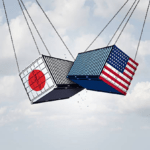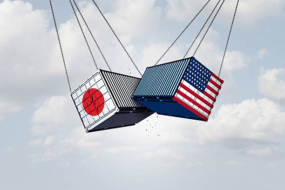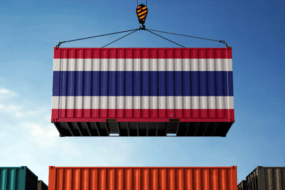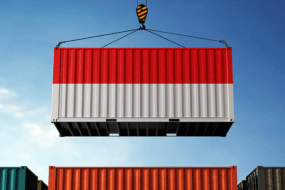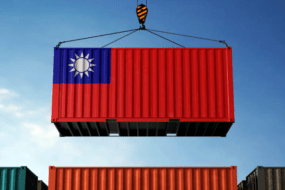- Home
- Trade News
- Vietnam’s pharmaceutical ...

Vietnam’s pharmaceutical industry is one of the fastest growing in Southeast Asia due to factors such as a rising GDP per capita and ageing population. In fact, it is also one of the top import-export industries in 2022.
According to IQVIA Institute, Vietnam is one of the top 17 nations with the fastest-growing pharmaceutical business. Vietnam is in the third group of 12 nations in the Pharmerging Markets category that is further subdivided into three categories. Vietnam ’s 14% GDP growth rate places it third in the world, behind Argentina and Pakistan.
Rising GDP per capita

With a current population of around 98 million and a GDP per capita of $4,100 USD in 2022, Vietnam is one of the fastest growing economy in the world. Moreover, despite the pandemic and challenges in the past years, Vietnam’s economic outlook in 2023 has a steady development.
The $4,100 USD figure also represents an increase of 10.8 percent from 2021. The government of Vietnam projects that the country’s GDP would double by 2030 and rise more than eightfold to $32,000 by 2050.
In tandem with this, the average age of the population is rising, the middle class is expanding, and health care is receiving more attention than ever before. Because of this, money is being spent on health items at a higher rate.
Ageing population

With over 98 million people and an average lifespan of over 76 years, Vietnam is a sizable market. Also, the percentage of Vietnamese citizens aged 60 and older has increased rapidly, from 9.9 percent in 2011 to approximately 12 percent in 2018. The elderly will make up around 25% of Vietnam ’s population by 2048, according the Vietnamese General Department of Population, as cited by Nganhduoc.vn.
With over 90% of the population covered by social security, an increasing number of Vietnamese are in a position to pay for the comparatively costly western treatment they need. The urbanisation rate is expected to reach 37 percent by 2020, with many of the country’s wealthier citizens relocating to the urban centres as a result. Asthma cases and the use of cholesterol-lowering, antidepressant, hypersensitivity, and diabetic medication have all risen in these regions as a result of the high amounts of pollution present there. Malaria, TB, and other infectious diseases have been on the rise in rural regions of Vietnam with the spread of acquired immune deficiency syndrome.
Vietnam ’s sector benefits from the 280 million people in neighbouring rising countries such as Thailand, Malaysia, Cambodia, Laos, and Singapore, all of which have needs comparable to Vietnam’s.
In 2010, just 60% of Vietnamese citizens had health insurance, but by 2019, that number has risen to 90%, according to data from the Vietnam Social Insurance Agency.
Growing industry
As of early 2019, the average annual medicine expenditure in Vietnam was under $75 USD. The Vietnamese pharmaceutical industry is often seen as having considerable future growth potential due to the country’s vast population and growing economy.
About 250 factories, 200 ports for importing and exporting, 4.3 thousand distributors, and over 62,000 retailers all contribute to the growing pharmaceutical production and commercial system.
The majority of Vietnam’s pharmaceutical industry may be found in and around Hanoi, Hai Duong province, Ho Chi Minh City, and a few regions in the southwest, most notably Can Tho City and Dong Thap province. Some of the largest pharmaceutical companies in Vietnam, including Hau Giang Pharmaceutical, Bidiphar, Imexpharm, and Pymepharco, have been renovating their plants in order to keep up with rising demand and remain competitive with imported drugs.
In 2022, the province of Hai Duong just announced its partnership with Indian companies on a massive pharmaceutical park. As much as $12 billion USD is planned to be spent by Indian companies in the pharmaceutical park. This Pharmaceutical Park project is the biggest of its type in Hai Duong province, including more than 900 hectares of land in the Binh Giang and Thanh Mien districts.
International investors, particularly those in the high-tech sector, will find Hai Duong more attractive as a result of this initiative and may open more doors for investment opportunities in 2023. It’s a good indicator forVietnam ’s pharmaceutical industry as a whole.
Attracting international investment
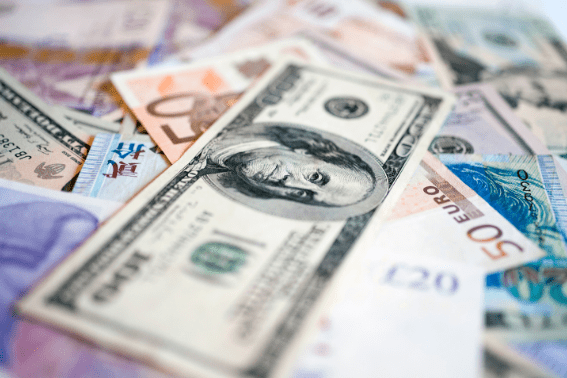
According to data provided by the Drug Administration of Vietnam to Febis, there were about 180 pharmaceutical manufacturing businesses and 224 domestic production facilities in Vietnam that met Good Manufacturing Practice (GMP) requirements as of 2019. However, local pharmaceutical demand is only met by 53% of Vietnam’s manufacturing capacity, and the government spent $4 billion USD importing medications in 2021. Similar to China, Vietnam imports its pharmaceutical components and supplies, with India being an increasingly important source.
Efforts have been made to encourage foreign investment through agreements like the European Union-Vietnam Free Trade Agreement (EVFTA), which permits investors to set up shop in Vietnam and import pharmaceutical products to sell to local distributors or wholesalers, construct warehouses, and conduct clinical trials.
Sure enough, Vietnam has a well-earned reputation for attracting investors from throughout the world. Particularly, the country has also been a good destination for US businesses.
Challenges

Mr. Ta Manh Hung, Deputy Director of the Drug Administration of Vietnam under the Ministry of Health, has observed the realities of the pharmaceutical industry in Vietnam and concluded that a lack of a reliable supply of raw materials is one of the main factors preventing the industry from flourishing.
The majority of Vietnam ’s pharmaceutical components, such as active ingredients and excipients, are now imported from China and India. Excipients, inorganic chemicals, herbal extracts, Terpin, DEP, Taurine, Berberine, and Curcumin are all examples of units that may manufacture raw materials used in the pharmaceutical industry.
Vietnam Report found that 90% of Vietnamese pharmaceutical companies rely on imported raw ingredients, making this a significant challenge. The pharmaceutical business is particularly sensitive to market disruptions due to its reliance on imported raw materials, which are subject to swings in exchange rates and supply shocks. Furthermore, manufacturing costs rise as a direct consequence of the high input prices associated with importing raw materials. It’s true that Vietnam’s pharmaceutical costs are 20-25% more than those in China and India.
However, if there is a disruption in the international supply chain for raw materials and medications, the Vietnamese pharmaceutical industry would collapse since it is so reliant on imported products. Case in point: dental anaesthetics, which are in low supply at Hanoi’s Central Odonto-Stomatology Hospital and must be imported from France and Canada.
Dengue shock infusions of either Dextran 40 or Dextran 70 have historically been hard to come by in Vietnam. Vietnam has not been able to manufacture this medicine, and imports have been hampered by supply disruptions in Thailand.
For the time being, there are still constraints on local drug manufacture, according to the Drug Administration of Vietnam. For instance, businesses have not investigated how to make raw materials using native medicinal plants or how to extract pure active components, which are the major focus of raw pharmaceutical materials or extracts.
Conclusion
The pharmaceutical industry in Vietnam is making rapid strides toward growth. Understanding its limitations is necessary in order to make full use of its vast potential. For development, it is important to take the appropriate actions and employ the appropriate resources.
The pharmaceutical industry has to diversify its sources of raw materials beyond only the traditional powerhouses of China and India if it is going to be able to keep up with the expanding demand.
In order to successfully increase the standards of the local pharmaceutical industry, there has to be a transfer of knowledge, skills, and resources from foreign partners to Vietnamese firms and regulatory bodies. This transfer of information and resources is necessary.
Making connections with Vietnamese businesses is the best way to get into the Vietnamese pharmaceutical industry. Look for a Vietnamese business with whom to form a joint venture or merger.
Before anything else though, you need to study the market and analyse your competitors. TradeData.Pro can help you with this!
Through our platform, you can conduct a rigorous market analysis that will allow you to comprehend your specialised market and identify potential opportunities based on complete bilateral trade data.
You can also keep a careful eye on market trends and anticipate possible issues to lessen the trade risks associated with your company operations and traded commodities.
Moreover, you may use import and export data to examine the degree of competition by establishing standards, acquiring industry insights, and tracking market trends. Compare the prices of several commodities and the current international trade trend with TradeData.Pro.
The most trustable and reliable source for Trade Data.
TradeData.Pro is a reliable and trustworthy source of trade data proudly made in Singapore, a country known for its stable political climate and trade-driven economy. Presented by Commodities Intelligence Centre, a government-linked company and a joint venture of Zall Smartcom, SGX, and GeTS, TradeData.Pro has received positive feedback from the market since its launch in 2018 for its extensive coverage, affordability, and fast response. The platform has been awarded the Singapore Quality Class in 2020 and the Stevie Award Gold in 2021.
Traditionally, obtaining critical data to reveal trends, identify market opportunities, track competitors, buyers, and suppliers, and better understand the potential of the supply chain has been a challenge. However, the detailed shipment information that is part of government import and export filing requirements does exist and forms the core of global trade. TradeData.Pro has gathered and packaged this information as business intelligence, which helps companies understand the flow of goods across borders and features the world’s largest searchable trade database. TradeData.Pro reviews, standardizes, and cleans data and delivers it in an intuitive format, making it easier for businesses to access.
Businesses interested in staying updated on Vietnam, the hottest industry lately, can access all relevant information on the TradeData.Pro platform. They can find the exact product they’re interested in by checking out the trade database demo at https://tradedata.pro/asia-trade-data/vietnam-import-export-data/. To learn more about accessing new markets, visit https://tradedata.pro/trade-database-demo/.
Additionally, businesses can check out this article to learn how to use TradeData.Pro to access Global Trade Markets: https://blog.tradedata.pro/say-hello-to-our-new-release-of-tradedata-pro/. To understand how TradeData.Pro works, watch the video below or visit https://www.youtube.com/watch?v=tITfUvjs6Gc.
Business Economic Economy Export Global Import International Trade Leads Generation Markets Opportunities Pharmaceuticals Supplier Trade Data Pro Vietnam Worldwide


